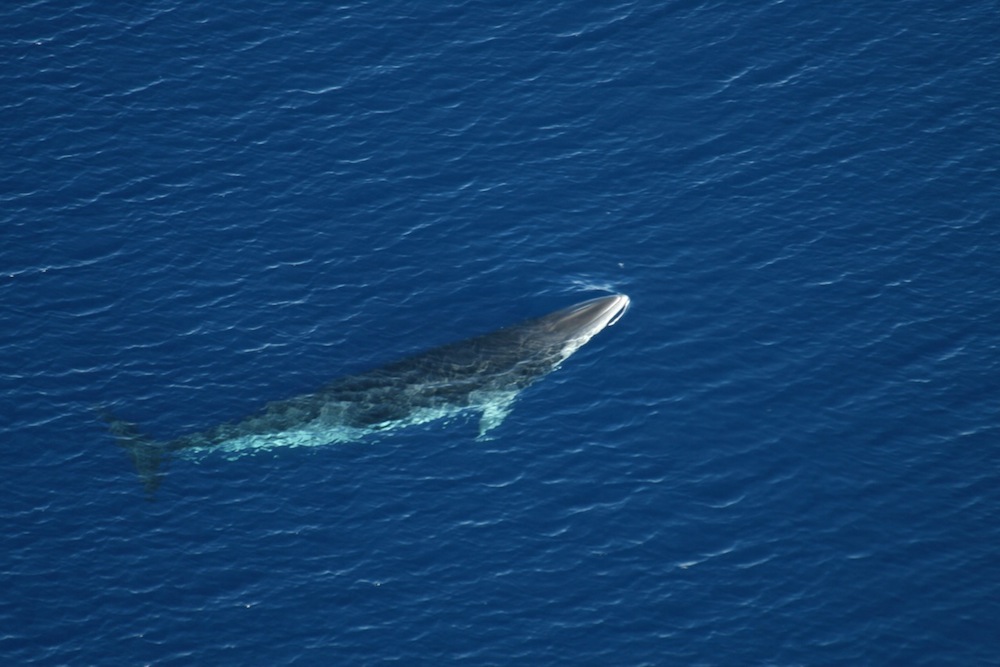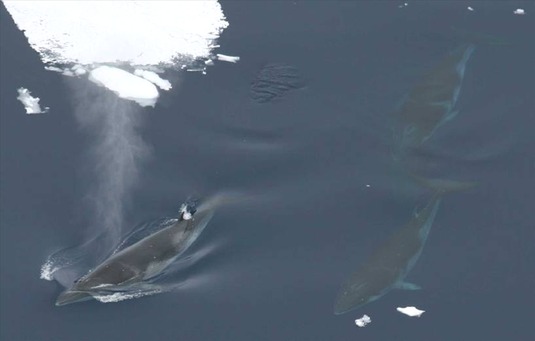Fishy Numbers? Minke Whales Hide in Ice, Fooling Scientists

Conventional population surveys of minke whales are flawed because the whales hide in broken-up sea ice, far from where boats can usually go, a new study says.
The finding points to the need to use aerial and boat surveys in this challenging environment, the researcher's lead author said, but he worries the expense will make it difficult to convince authorities this is the preferred method to seek out the whales.
Minke whales are small baleen whales that live in all oceans, but typically prefer chilly waters. The International Whaling Commission estimates that Antarctic minke whales have declined throughout the Southern Ocean by about 30 percent.
"If you want to study whales, we now have to redesign our surveys to take this into account," said Rob Williams, a research fellow at the University of St. Andrews in the United Kingdom who is usually based on the west coast of Canada.
For this particular survey, Williams and his team conducted the studies in the Antarctic's Weddell Sea across two field seasons. The impetus was to figure out if a dire estimate for the minke whale population – that it fell 50 percent in the sea between the late 1980s and late 1990s, the latest available data – was indeed true, or if better information was required.
Ice as a food source

Before seeking out the minke, Williams co-published a study concerning the most fuel-efficient way to find whales among small fjords and islands in British Columbia, which hosts several species of whales. That got the attention of German researchers who were seeking better information on minke in sea ice. The German researchers were partially driven by concerns about Japan's scientific whaling program, which typically hunts about 935 whales a year.
Get the world’s most fascinating discoveries delivered straight to your inbox.
With support from German and Dutch agencies, Williams' team then received free time on the German icebreaker RV Polarstern, where they were able to survey a range of habitats ranging from open water to completely ice-covered water. Most of the whales gathered at the ice edge, they noticed. [Photos: Antarctica, Iceberg Maker]
Minke, which grow to about 26 feet (8 meters) long, enjoy eating krill – a small crustacean that resembles shrimp– through their sievelike mouths. Krill congregate in the slushy ice because their food source, diatoms, thrive in the mostly translucent waters that have ice providing shelter against predators.
Statistical limitations
Because whales are diving animals that live in the ocean, it's very difficult to understand where they are located and how large their population is. One challenge was tracking exactly where the sea's edge is, as it does not show up sharply in satellite photographs.
Even using a helicopter has its limitations, said co-researcher Natalie Kelly, a statistician with the Commonwealth Scientific and Industrial Research Organization (CSIRO) in Australia, because you can't see directly underneath the aircraft.
"The vast majority of aircraft are not 'perfect platforms' from which to undertake surveys for marine mammals. However, helicopters, with their relatively large windows, and slower flight speeds, are still going to yield quality sighting data," she wrote in an email to Live Science.
However, she added, that some minke have had satellite trackers attached to them, which could in the future make whale surveys more accurate.
"The new study shows that understanding how minke whales use the dynamic sea ice environment is a key to predicting how minke whales will respond to a changing climate," Williams wrote.
The research was published March 13 in the journal Scientific Reports.
Follow Elizabeth Howell @howellspace. Follow us @livescience, Facebook & Google+. Original article on Live Science.

Elizabeth Howell was staff reporter at Space.com between 2022 and 2024 and a regular contributor to Live Science and Space.com between 2012 and 2022. Elizabeth's reporting includes multiple exclusives with the White House, speaking several times with the International Space Station, witnessing five human spaceflight launches on two continents, flying parabolic, working inside a spacesuit, and participating in a simulated Mars mission. Her latest book, "Why Am I Taller?" (ECW Press, 2022) is co-written with astronaut Dave Williams.
